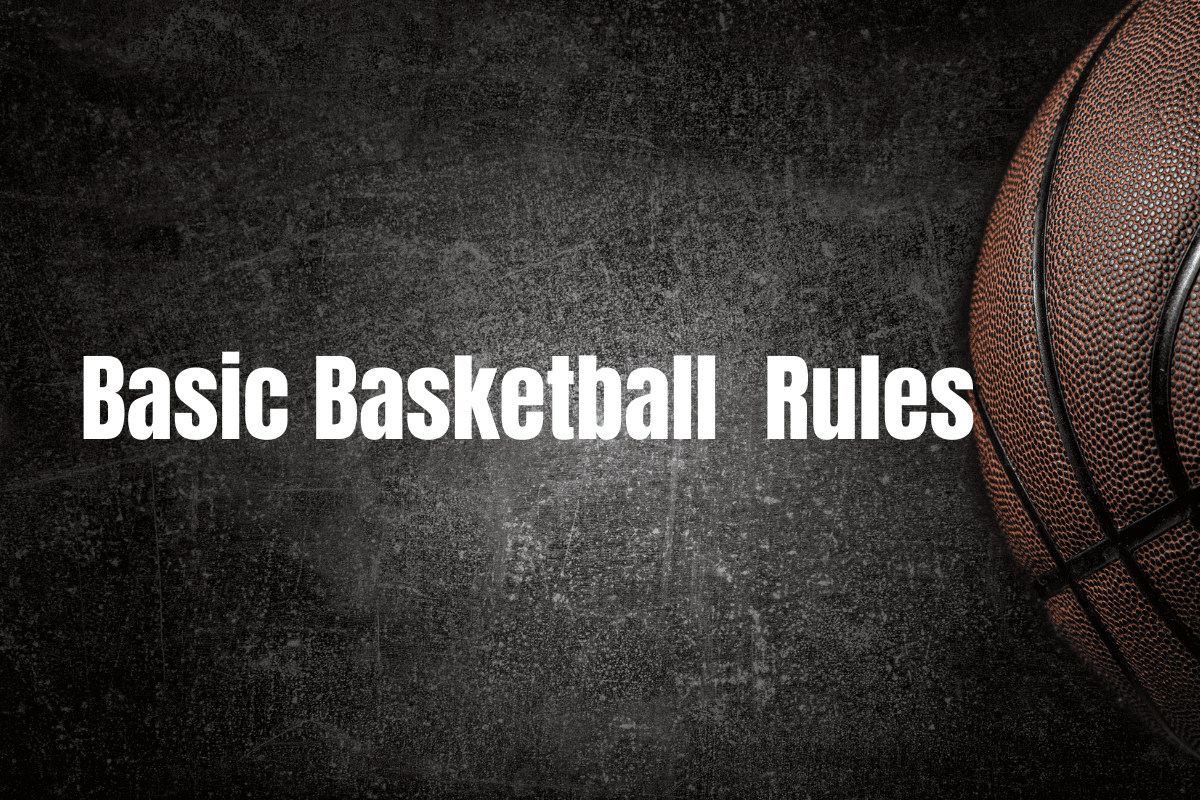Get to Know the Basic Rules of Basketball (Beginner’s Guide)
Basketball captivates millions worldwide, not just with its high-flying dunks and fast-paced action, but also with its unique blend of simplicity and strategic depth. This article aims to break down the fundamental rules of basketball, transforming beginners into well-informed fans and players.
Whether you’re planning to hit the court or just watch a game, understanding these basics will enhance your experience.
The Essence of the Game
At its heart, basketball is about outscoring your opponent. It’s played on a rectangular court with a hoop at each end.
The objective?
Shoot the ball through your opponent’s hoop to score points while preventing them from doing the same. This simple goal belies a game rich in strategy and skill, where teamwork and individual brilliance both shine brightly.
Players and Positions

A standard basketball team on the court consists of five players, each with specific roles and responsibilities. The Point Guard, often considered the team’s leader, orchestrates the offense, directing plays and making strategic passes. The Shooting Guard is typically the team’s primary scorer, proficient in long-range shooting.
The Small Forward offers versatility, adept at both offense and defense. The Power Forward plays near the basket, using their strength to score and defend.
Lastly, the Center, usually the tallest player, dominates near the hoop, blocking shots and scoring in close range. Understanding these positions is key to grasping the game’s dynamics.
Positionless Basketball in Today’s Game
The concept of “positionless basketball” has revolutionized the modern game, blurring the lines between traditional roles. This approach emphasizes players’ versatility, with skills no longer confined to specific positions. Guards are now expected to rebound and defend, while forwards and centers often engage in shooting and playmaking.
This shift has been driven by an increased focus on three-point shooting and a faster pace of play, demanding agility and defensive flexibility from all players. Icons like LeBron James and Giannis Antetokounmpo, capable of playing across multiple positions, epitomize this trend.
Positionless basketball has led to a more dynamic, high-scoring game, changing team strategies and player development. Players are now encouraged to cultivate a wide array of skills, adapting to the evolving demands of the sport.
Read More:
Starting the Game

Every basketball game begins with a tip-off. The referee tosses the ball up between two players (usually the centers) at the center circle. They leap to tap the ball to their teammates, marking the game’s start. This exciting moment sets the tone for the match, as teams vie for the first possession and the chance to score the opening points.
Scoring Points
Points in basketball are scored mainly through field goals. A regular shot made from inside the three-point line is worth two points. However, if a player successfully shoots from beyond the three-point line, the team earns three points.
Another scoring opportunity comes from free throws, awarded following certain fouls. Each successful free throw is worth one point. The art of scoring in basketball involves a mix of skill, strategy, and sometimes sheer audacity.
Game Duration and Timing
A standard basketball game is divided into four quarters, each lasting 12 minutes in professional leagues. In college basketball, the game is typically played in two halves of 20 minutes each. The clock stops for various reasons, like fouls and ball out-of-bounds, making the actual game-time longer than the clock time.
Teams are also allowed time-outs, short breaks for rest and strategy discussions. Understanding how the clock and time-outs influence the game is crucial, as they often play a significant role in the strategy, especially in close matches.
Violations and Fouls
Basketball, while a free-flowing game, has strict rules to maintain fairness and safety.
Violations like traveling (moving without dribbling the ball), double dribbling (starting to dribble again after stopping), and the three-second rule (staying in the key for more than three seconds) can turn the ball over to the opponent. These rules encourage continuous play and skillful ball handling.
Fouls, on the other hand, are more about player conduct. A personal foul is called for illegal physical contact, like hitting or pushing an opponent. Technical fouls, less about physical play and more about behavior and sportsmanship, can be given for unsportsmanlike conduct, such as arguing with a referee.
Fouls can lead to free throws for the opposing team and, in the case of repeated fouls, can even result in a player being ejected from the game.
Common Fouls in Basketball

In basketball, certain fouls are more prevalent and have a significant impact on the flow and strategy of the game. Here’s a closer look at some of the most common fouls.
- Reach-In Foul: A reach-in foul is a type of personal foul that occurs when a defender extends their arm and makes illegal contact with the player holding the ball in an attempt to steal it. This often happens when the defender is overly aggressive in trying to swipe the ball away and instead hits the player’s arm or hand. Reach-in fouls are common during on-ball defense and can lead to free throws if the team is in the bonus.
- Blocking Foul: This foul is called on a defensive player who unlawfully obstructs the path of an offensive player. If the defender is not in a set position at the time of contact, particularly as the offensive player is driving to the basket, a blocking foul is called. Mastery in avoiding this foul requires quick reflexes and accurate anticipation.
- Charging Foul: A charging foul is the inverse of a blocking foul and is called on an offensive player who runs into a stationary defender. For a defender to successfully draw a charging foul, they must establish their position before the offensive player initiates contact. This foul highlights the importance of strategic positioning in defense.
- Shooting Foul: Occurring when a defender makes illegal contact with an offensive player in the act of shooting, this foul can vary in severity from a minor hand touch to more significant physical contact. The shooter is awarded free throws, with the number dependent on the location of the attempted shot.
Winning the Game
Ultimately, the aim is simple: have more points than your opponent when the final buzzer sounds. In the event of a tie, the game goes into overtime, with additional periods played until a winner emerges.
Conclusion
Basketball’s beauty lies in its simplicity and depth. By understanding these basic rules and structures, you can appreciate the game’s nuances and enjoy the thrilling experience of playing or watching basketball. Whether you’re cheering from the stands or shooting hoops in your backyard, the game offers endless excitement and fun.

